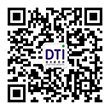EU EN71 testing scope and core requirements for dolls and toys
Date:2025-07-21 10:30:17 Classification
:【question】 Visits:
The EU EN71 test for doll toys covers physical mechanics, flammability and chemical element migration tests. The core requirement is to ensure that the materials are safe, non-toxic and have a stable structure.
1. Scope of testing
- Physical and mechanical properties: Test the physical and mechanical properties of doll toys, including drop detection, small parts detection, sharp edge detection, tension detection, pressure detection, etc., to ensure that the toys will not cause physical harm to children during normal use.
- Flammability: Specify the types of flammable materials that are prohibited for use in all toys, and put forward combustion performance requirements for toys with certain small fire sources to ensure that the flame spread speed is within a safe range.
- Chemical element migration: Test the limit values of migratable elements (such as antimony, arsenic, barium, etc.) in the accessible parts or materials of doll toys to prevent children from ingesting harmful substances due to contact with toys.
2. Core requirements
- Material safety: Doll toy materials must comply with the migration limits of migratable heavy metal elements (such as lead, mercury, cadmium, etc.) in the EN71 standard to prevent toxic substances from entering children's bodies through chewing or skin contact.
- Structural stability: Toy design must avoid sharp edges, small parts that fall off, and parts that are easy to swallow. Physical performance tests must be performed to ensure structural stability and reduce the risk of choking, cutting, or swallowing.
- Flame retardant performance: For parts involving flammable materials such as plush and textile fabrics, the EN71-2 combustion test must be passed to ensure that the flame spread rate meets the standard limit.
- Age labeling and warnings: Toys must be accompanied by clear age warning labels to indicate the applicable age range and potential risks.
- CE mark compliance: After passing the EN71 test, the toy must be affixed with the CE mark. The size, proportion, and printing position of the mark must meet the regulatory requirements to ensure that the product can legally enter the EU market.
3. Testing process and cycle
- The testing process includes application submission, sample provision, laboratory testing, and certificate issuance. The testing cycle is usually 5-7 working days.
- The test items cover the three core standards of EN71-1 physical and mechanical properties, EN71-2 flammability, and EN71-3 chemical element migration.
4. Applicable product types
- The EN71 standard applies to toys and supplies designed for children under 12 years old, covering dolls, models, projectile toys and other types.
5. Laws and market access
- The EU requires that all toys entering the market must pass EN71 testing and obtain CE certification, otherwise they may face the risk of being removed from the shelves or banned from sale.
6. Standard updates and supervision
- The EN71 standard will be updated with technological advances (such as the revision of chemical test methods in EN71-3:2013), and companies need to continue to pay attention to standard dynamics to meet regulatory requirements.




 Shen Gongwang Security: 44030602006947
Shen Gongwang Security: 44030602006947